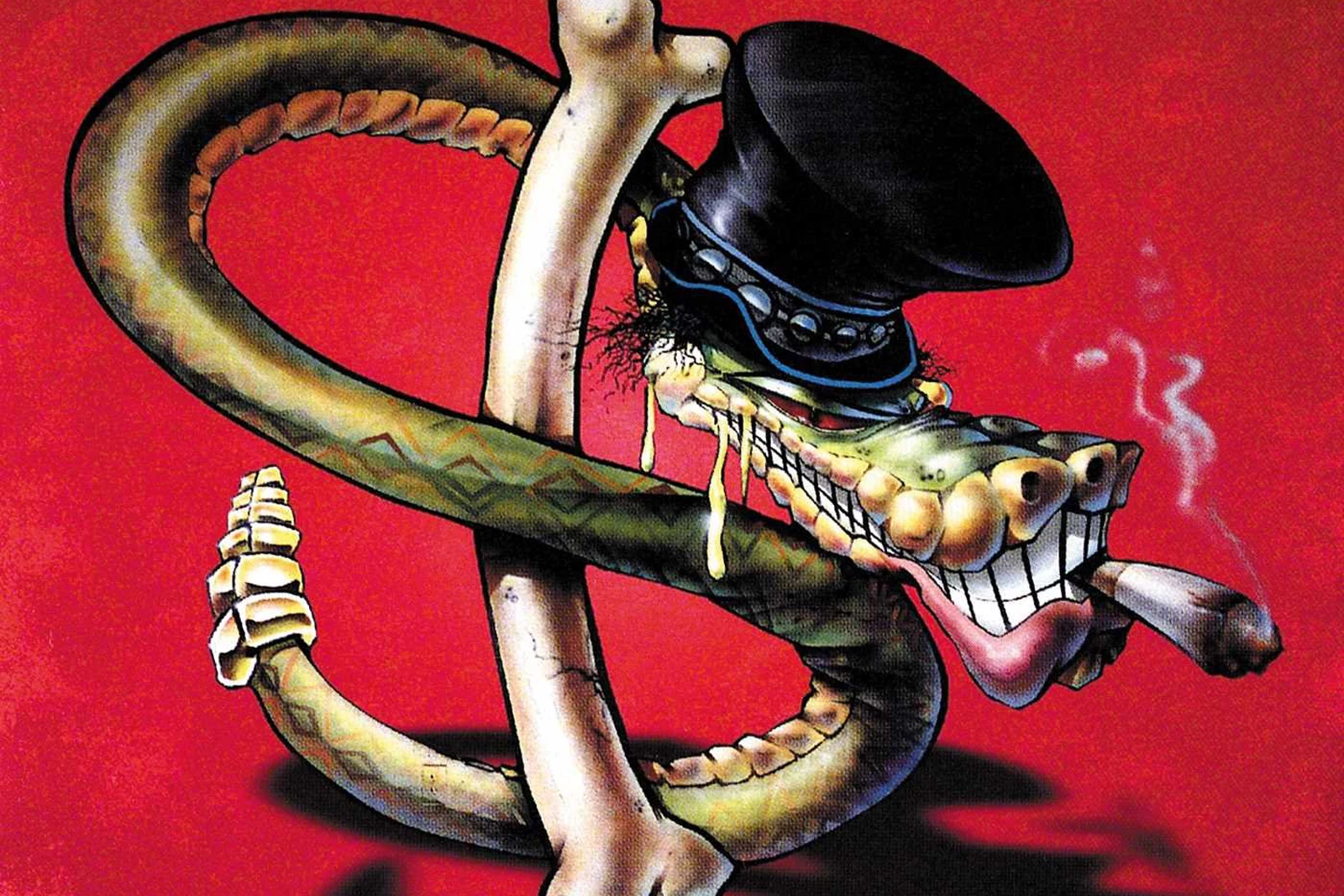
25 Years Ago: How Slash’s First Solo Album Rekindled His Love of Music
by Ken KelleyTo say things were murky in Guns 'N' Roses' world in February 1995, when guitarist Slash released It's Five O'Clock Somewhere as Slash's Snakepit, would be a gross understatement.
By the time Guns 'N' Roses wrapped their Use Your Illusion tour in Argentina in July 1993, the band had performed in front of 7 million fans over the course of 192 shows in two and a half years. By the time they released their covers LP "The Spaghetti Incident?" in November 1993, band relations were showing signs of fraying.
In his 2007 autobiography Slash, the guitarist recalled how Guns 'N' Roses started feeling like a foreign entity with Axl Rose exerting an outsized influence over the direction and membership of the group. Not only had the singer dismissed guitarist Gilby Clarke without consulting the other members of the group, he also insisted on having guitarist Paul Huge take Clarke's place.
"I was open to the idea ... until Paul showed up," Slash said in the book. "He had no personality whatsoever, and no particular guitar style or sound that I could identify with."
With lines of communication with Rose becoming increasingly closed off, Slash recalled how, over the course of the Use Your Illusion tour, he had amassed a number of songs he'd written that had no specific purpose in mind.
Watch the Video for Slash's Snakepit's 'Good to Be Alive'
"I was writing for the hell of it, just doing music indicative of where I was at the moment," he says in the book. "I hadn't grasped the idea of doing a Guns record or what that might be going forward. I was just having a good time with no pressure whatsoever."
"At the start of it, it was a step-by-step thing," Slash said in a 1995 interview with Ireland's RTE. "At first, it was just a bunch of us hanging out, really enjoying each other's company, and then it turned into jamming and coming up with new riffs and stuff. At first, it was just [drummer] Matt [Sorum] and myself and after that, Gilby got involved and [Alice in Chains bassist] Mike Inez mysteriously showed up at a party I was having, [and he] brought this whole new vibe to it and it seemed like a band. It was guys jamming together, bonding just through the playing and personalities without the rock-star shit. It was just enjoying playing together."
The guitarist said things between himself and the band jelled so well, they went into the studio with producer Mike Clink and laid down the tracks for It's Five O'Clock Somewhere without vocals. Slash said while the group briefly entertained having different singers contribute to the making of the record, he eventually recruited former Jellyfish touring guitarist Eric Dover to sing, a recommendation that came from Clarke's ex-drummer Marc Danzeisen.
The selection of Dover "was based purely on the fact he could sing," Slash said. "I never met the guy before I heard him sing. It was based on a tape that I heard him sing, and then he wrote 'Beggars and Hangers On,' which turned out to be our first single."
Watch the Video for Slash's Snakepit's 'Beggars and Hangers On'
"The main thing about Snakepit," the guitarist noted, "it's a whole different thing. There's no lead-singer, lead-guitar-player hierarchy. With Guns 'N' Roses, there is a certain focus on Axl and myself, but with this band, it was an equal amount of effort from all involved. Eric, being a rhythm guitar player, he doesn't have that lead-singer attitude."
Slash and Dover wrote the lyrics for all 12 songs on the album, which reached No. 70 on the Billboard 200 Albums chart and sold more than a million copies. "I think it's easy to tell which songs he wrote and which ones I wrote," Slash notes in his book. "All of my songs are directed at one person, though no one picked up on it at the time. I used that record as an opportunity to get a lot of shit that I needed to get off my chest."
After having secured the album's release through Geffen Records, Slash's Snakepit hit the road on a tour that would eventually take the group through the U.S., Europe, Japan and Australia. When Inez and Sorum were unable to commit to touring, Slash recruited Brian Tichy and James LoMenzo, both of whom had worked with Zakk Wylde, to perform alongside him and Clarke.
Following more than two years of playing to throngs of faceless crowds in stadiums all over the world, Slash credited the Snakepit tour for reawakening what originally sparked his interest in music.
"We had a lot of fun, there was no drama," the guitarist says in Slash. "We just booked gigs, showed up, got up there and played. We did clubs and theaters, and it was great. It really helped me discover why I love what I do. That project was the essential soul-searching that I needed, because I felt like I'd forgotten myself over the last two years. It was a shot in the arm for me to rediscover what it is I always knew: Being in a band doesn't have to be so taxing emotionally and psychologically. ... It can just be all about the playing."
Guns N' Roses Lineup Changes: A Complete Guide (We Think)

Axl Rose, Izzy Stradlin, Chris Weber, Johnny Kreiss and various bassists (Rose / Hollywood Rose, 1983-1984)
This very early lineup of Hollywood Roses, a precursor to Guns N' Roses, records a five-song demo. Stradlin had been childhood friends with Axl Rose.
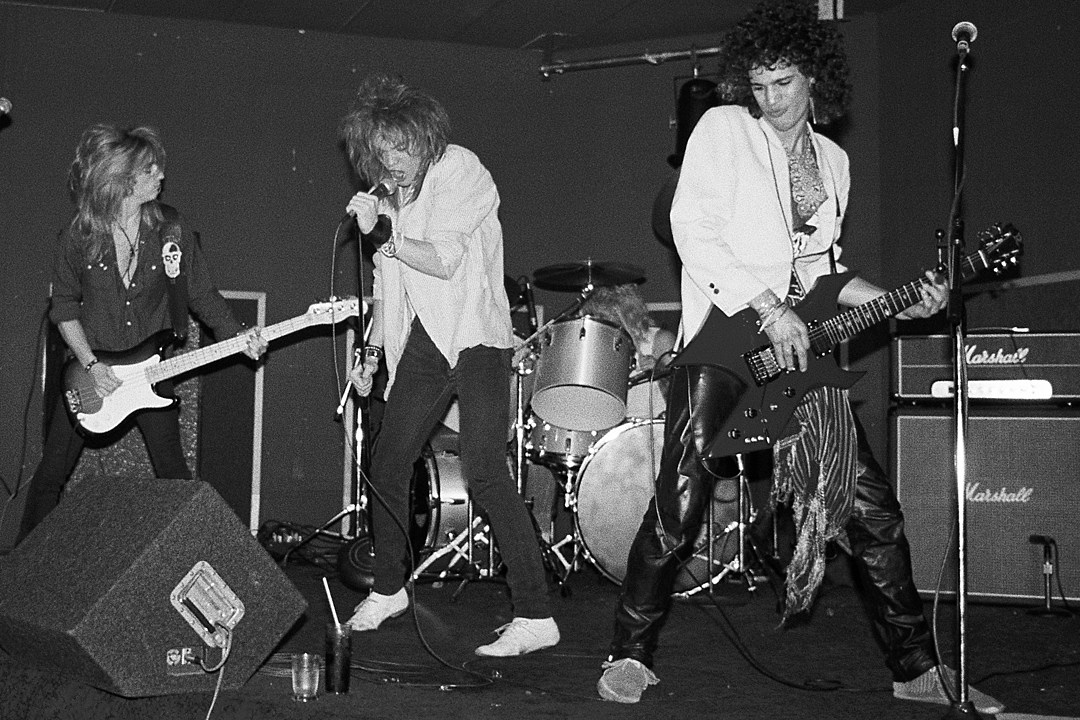
Axl Rose, Slash, Steven Adler, Steven Darrow (Hollywood Rose, 1984)
Slash briefly joins, seemingly inching Guns N' Roses closer to its classic lineup, but then Stradlin leaves. A final Hollywood Rose show at the Troubadour briefly brings everything to a halt.

Duff McKagan, Slash, Steven Adler, with various singers (Road Crew, 1985)
Slash, Adler and McKagan go on form Road Crew, but are without a singer since Rose was now with L.A. Guns. Auditions go nowhere, however, and they split.
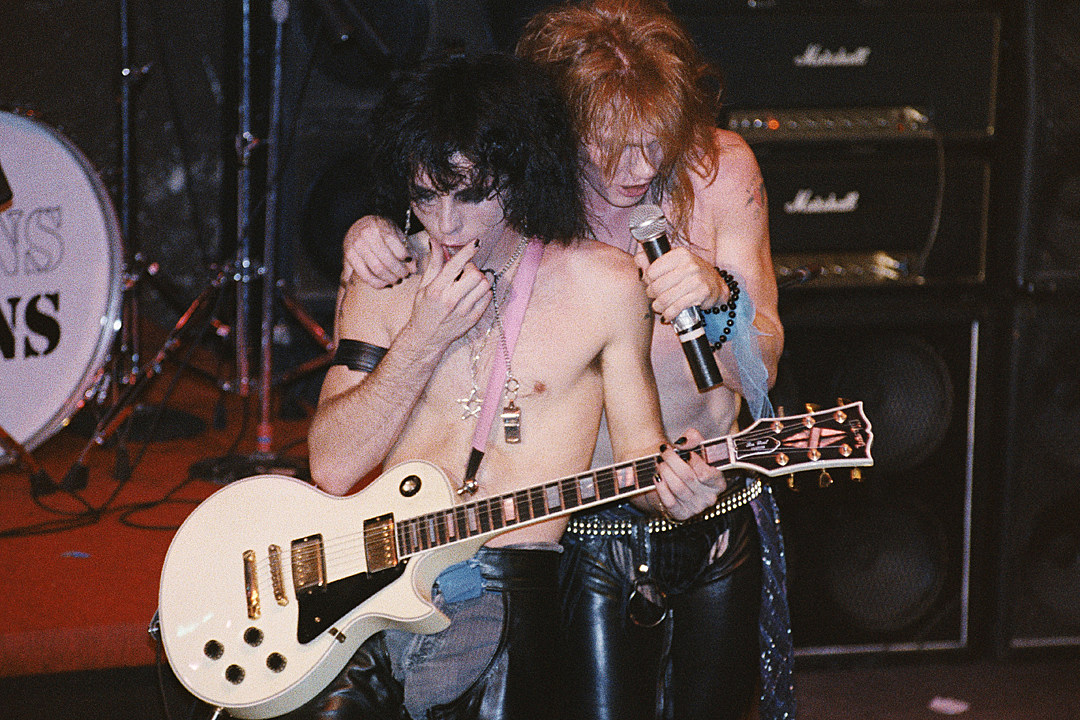
Axl Rose, Izzy Stradlin, Tracii Guns, Ole Beich, Rob Gardner (1985)
Meanwhile, L.A. Guns grow into a new band, which Axl and Tracii retitle by combining their stage names. Soon, Guns N' Roses return to the Troubadour.
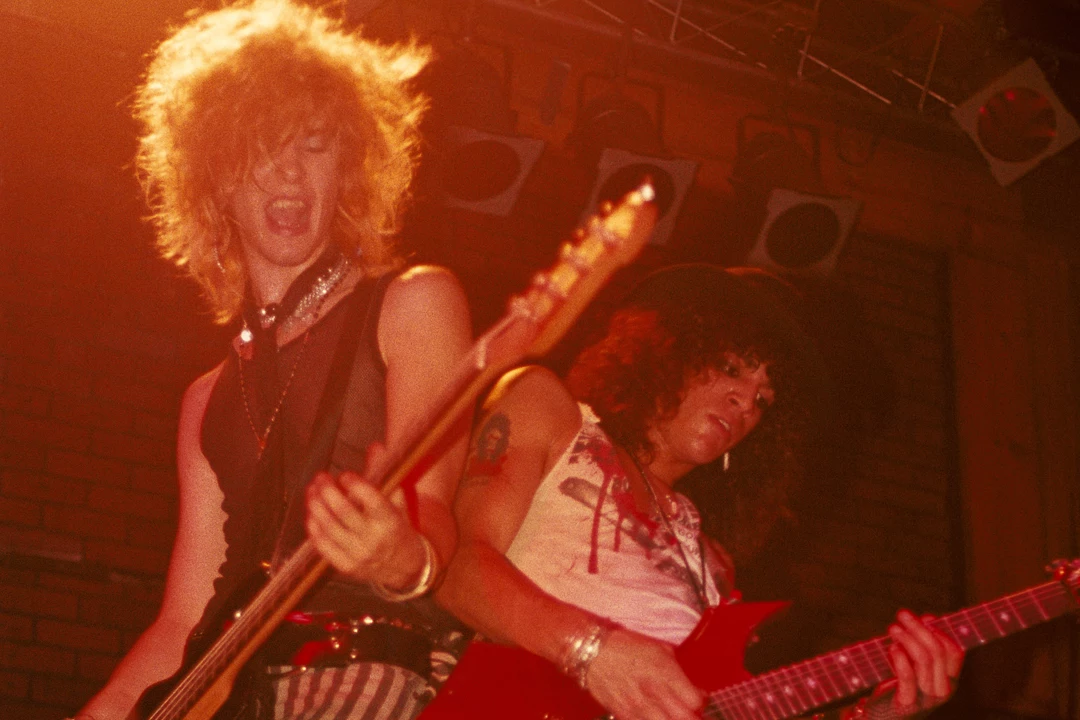
Axl Rose, Izzy Stradlin, Tracii Guns, Duff McKagan, Rob Gardner (1985)
Beich is quickly replaced by Duff McKagan, who also had booking connections. Those rough-and-tumble early dates became known as the Hell Tour.
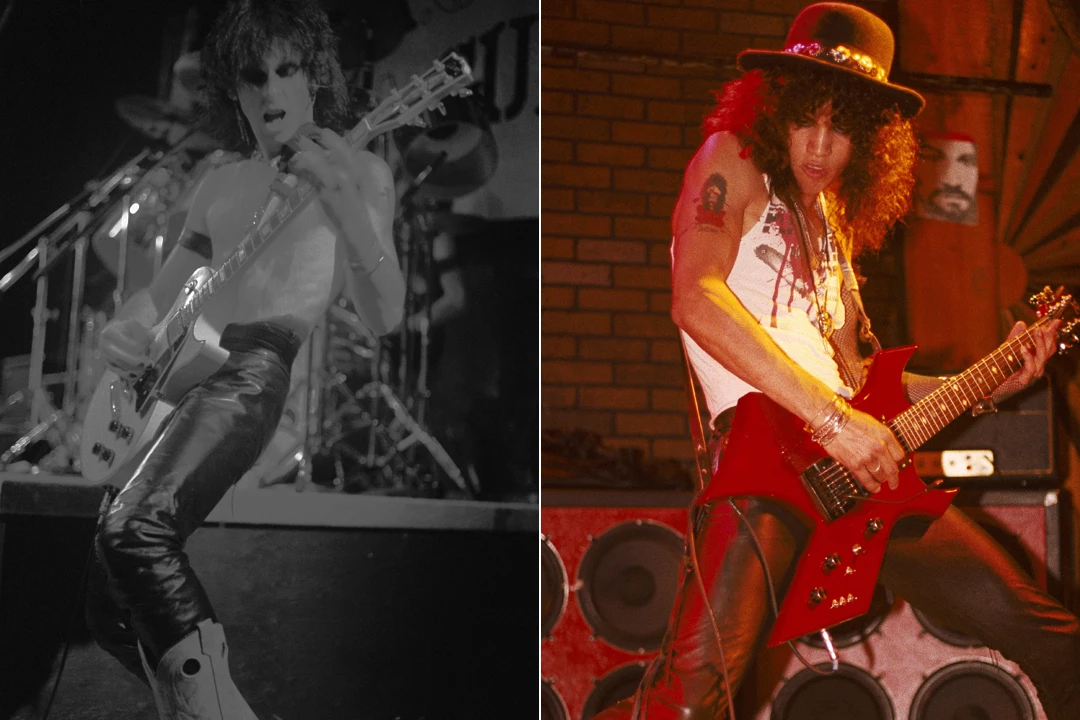
Axl Rose, Izzy Stradlin, Slash, Duff McKagan, Rob Gardner (1985)
Guns' failure to make rehearsal leads the band back to Slash, who now had a musical connection with the newly recruited McKagan as well.

Axl Rose, Izzy Stradlin, Slash, Duff McKagan, Steven Adler (1985-1990)
McKagan then brings in the final piece of the Guns N' Roses classic-era lineup, as the band adds Adler from Road Crew. A pair of multi-platinum albums follow.
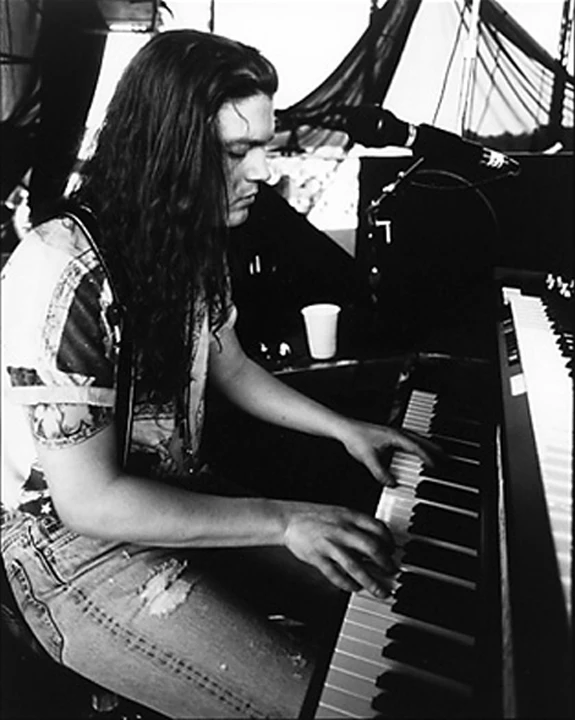
Axl Rose, Izzy Stradlin, Slash, Duff McKagan, Steven Adler, Dizzy Reed (1990)
Keyboardist Reed, a friend of Rose's, adds further depth to their sound in the run up to 'Use Your Illusion I and II.' He eventually becomes the band's second-longest tenured member ever, after Rose.

Axl Rose, Izzy Stradlin, Slash, Duff McKagan, Matt Sorum, Dizzy Reed (1990)
An earlier bandmate of Reed's, Sorum takes over for Adler, who has struggled with drug addiction. The 'Use Your Illusion' albums go on sell 14 million copies in the U.S. alone.
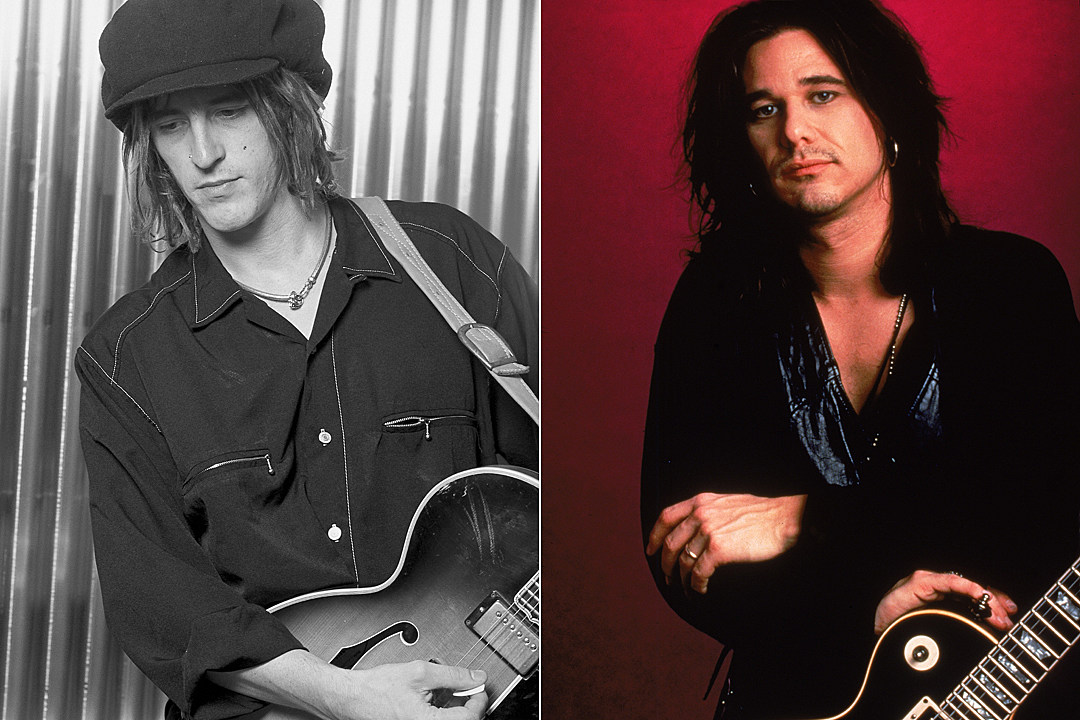
Axl Rose, Slash, Duff McKagan, Matt Sorum, Dizzy Reed, Gilby Clarke (1991-1994)
Stradlin is the next founding member to leave, reportedly having gotten fed up with the band's outsized lifestyle. Clarke and Slash become close, leading to later solo collaborations.
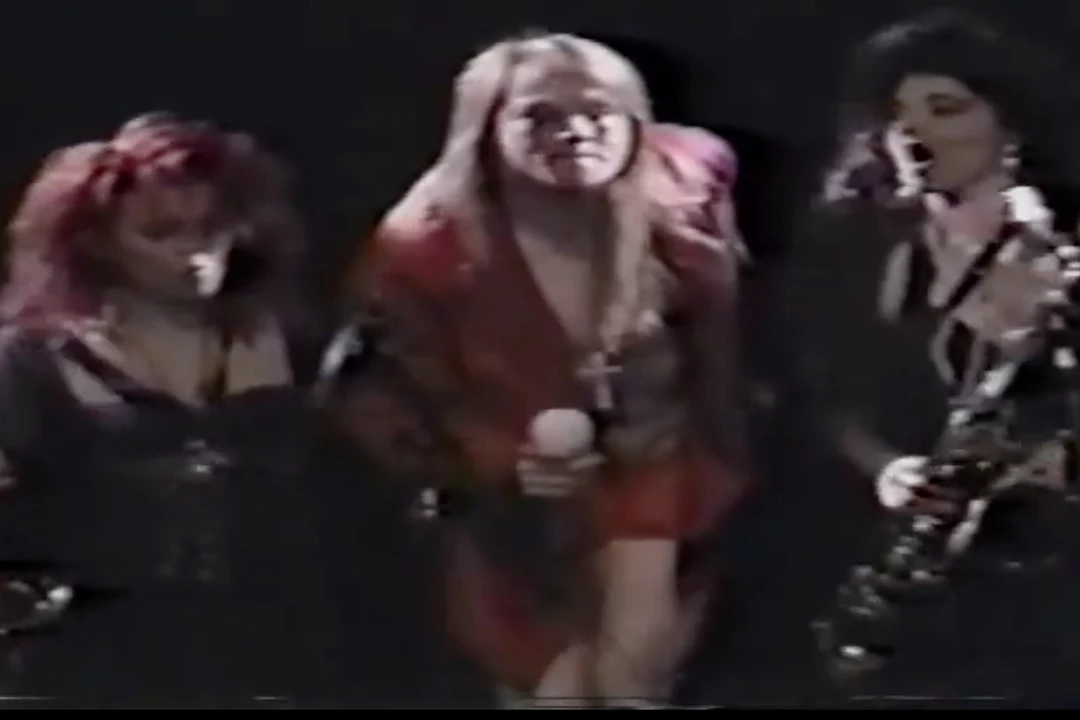
Guns N' Roses + Background Singers, Horns (1991)
The expansive 'Use Your Illusion I and II' projects led to a similarly overstuffed tour that featured a 12-piece band including an additional keyboardist, three background vocalists and the 976 Horns.
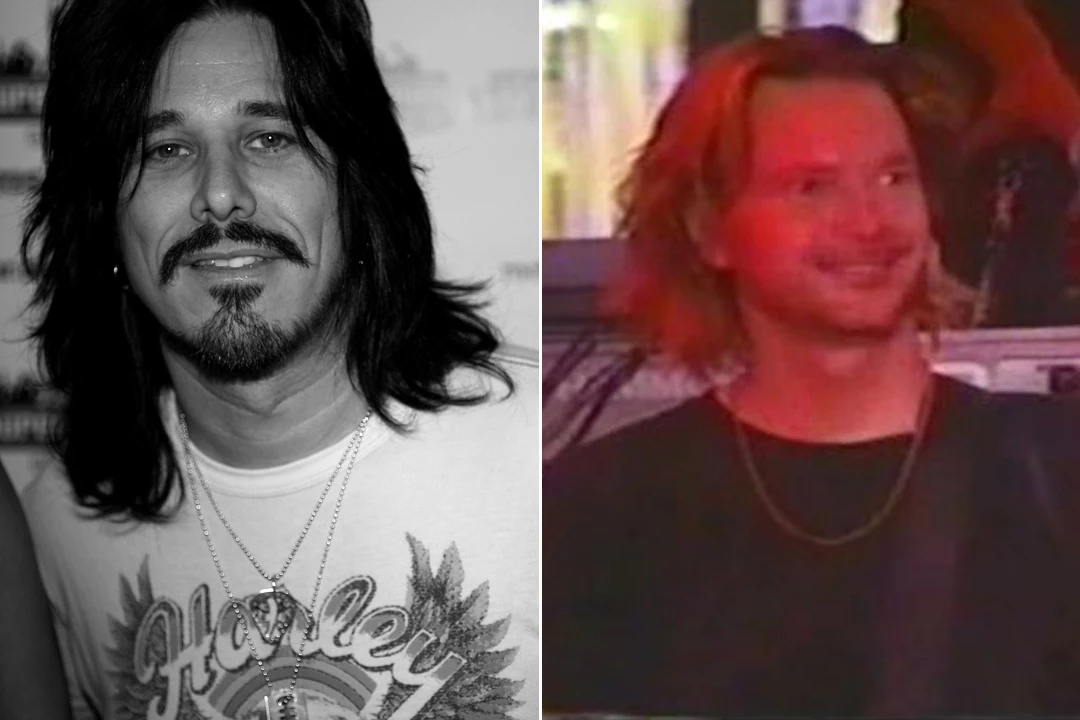
Axl Rose, Slash, Duff McKagan, Matt Sorum, Dizzy Reed, Paul Tobias (1994-1996)
Tobias, a childhood friend who collaborated with Axl in Hollywood Rose, takes over for Clarke – and sparks the next lineup shift. Slash balks, and soon departs.
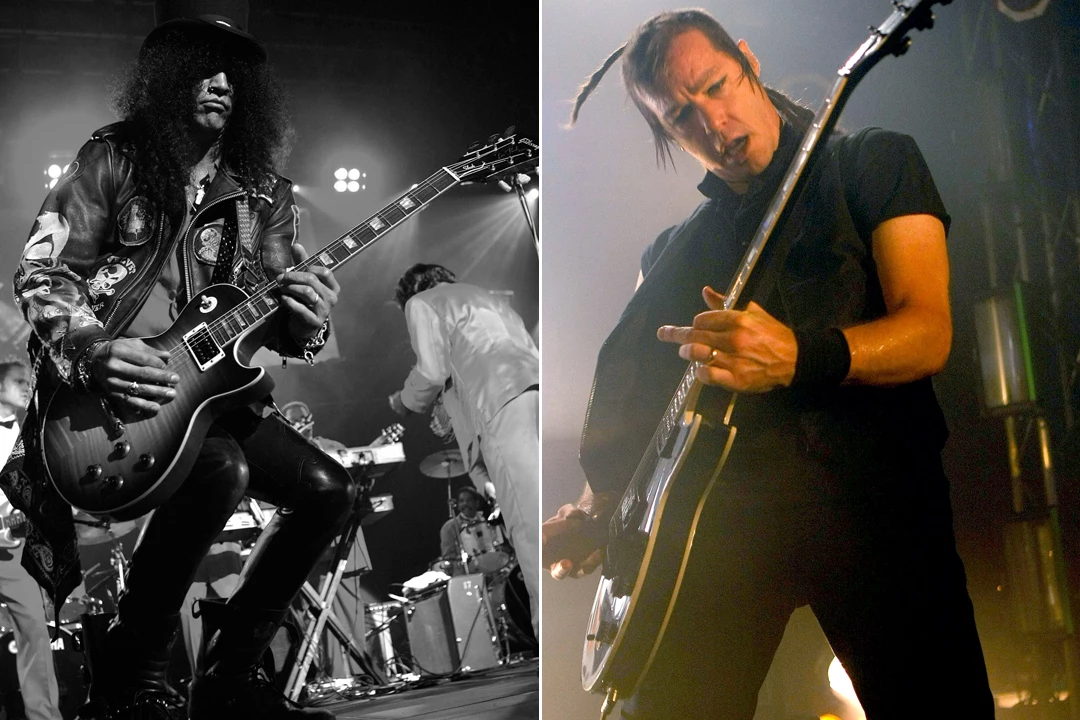
Axl Rose, Duff McKagan, Matt Sorum, Dizzy Reed, Paul Tobias, Robin Finck (1997)
Finck takes over for Slash, after a stint as Nine Inch Nails' touring guitarist. But first, simmering tensions led to a blow up over an update of 'Sympathy for the Devil,' recorded without Slash's friend Clarke. Slash calls this Rolling Stones cover "the sound of the band breaking up."
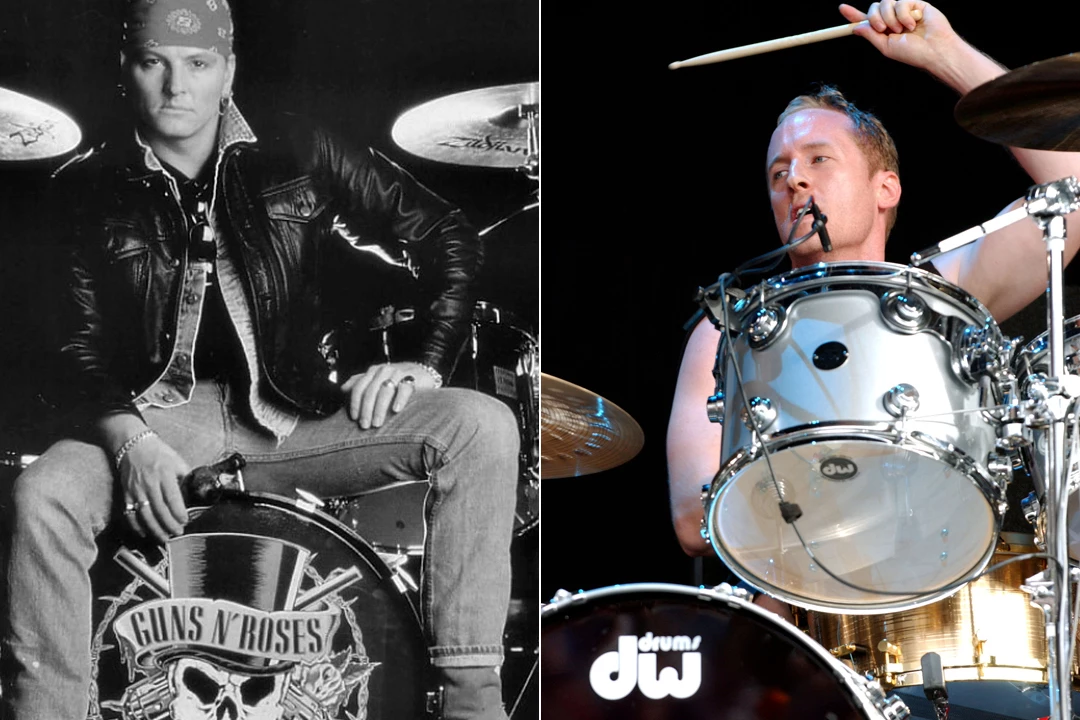
Axl Rose, Duff McKagan, Dizzy Reed, Paul Tobias, Robin Finck, Josh Freese (1997)
Sorum also found it difficult to work alongside Tobias, once describing him in Q magazine as the "Yoko Ono of Guns N' Roses." Sorum is replaced by Freese, best known for his tenure with Devo, later played with Nine Inch Nails, too.
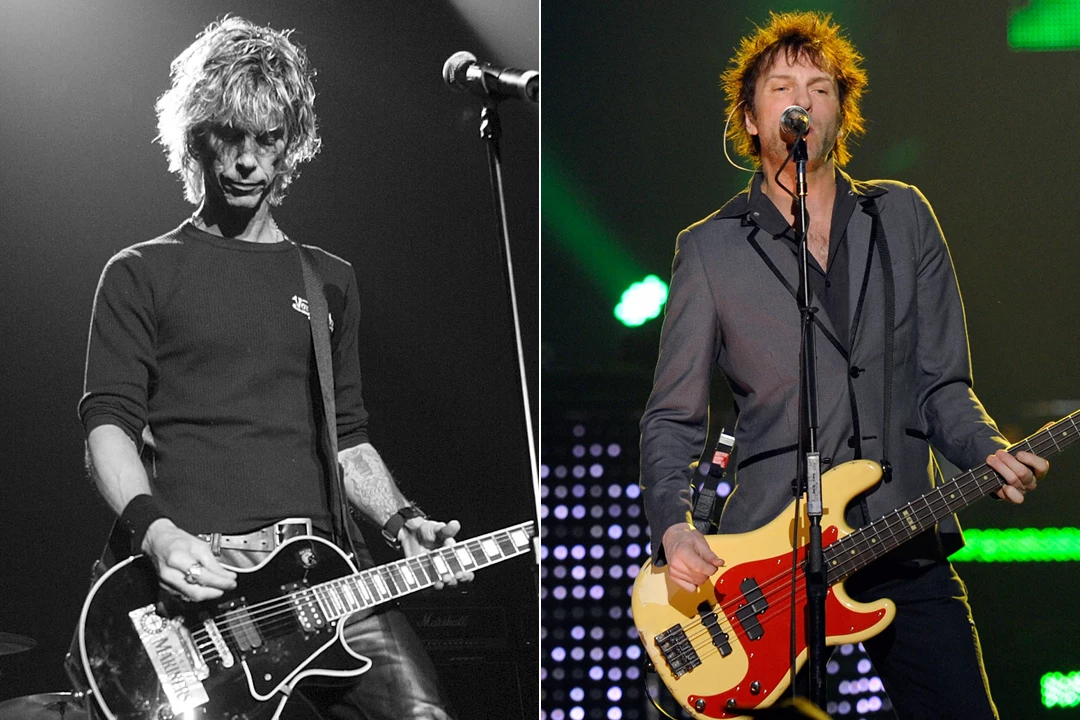
Axl Rose, Dizzy Reed, Paul Tobias, Robin Finck, Josh Freese, Tommy Stinson, Chris Pitman (1998-1999)
McKagan's departure leaves Rose as the band's final classic-era member. Stinson, of Replacements fame, takes over on bass. Pitman, a multi-instrumentalist, had earlier worked with Tool.
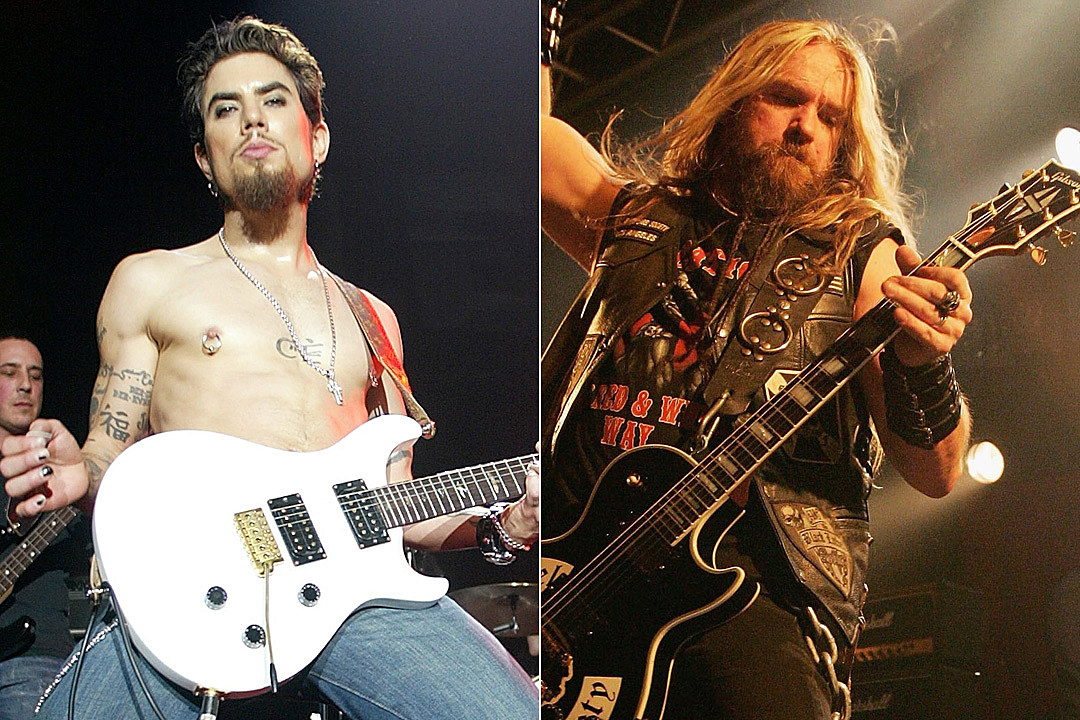
Guns N' Roses + Other Guitarists
Navarro, of Jane's Addiction and the Red Hot Chili Peppers, plays guitar on "Oh My God," from 1999's 'End of Days' soundtrack. Zakk Wylde also auditioned at one point.
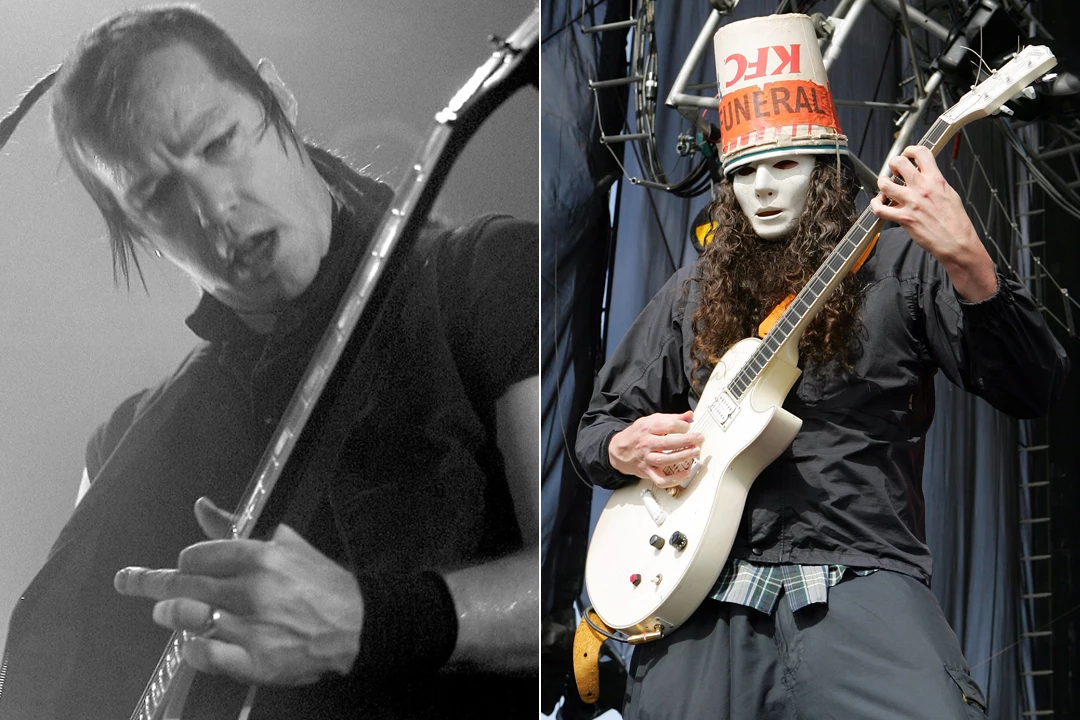
Axl Rose, Dizzy Reed, Paul Tobias, Josh Freese, Tommy Stinson, Chris Pitman, Buckethead (2000)
Finck is replaced by Brian Carroll, a guitarist whose on-stage appearance led to the nickname Buckethead. Carroll continues a very busy, more experimental solo career.
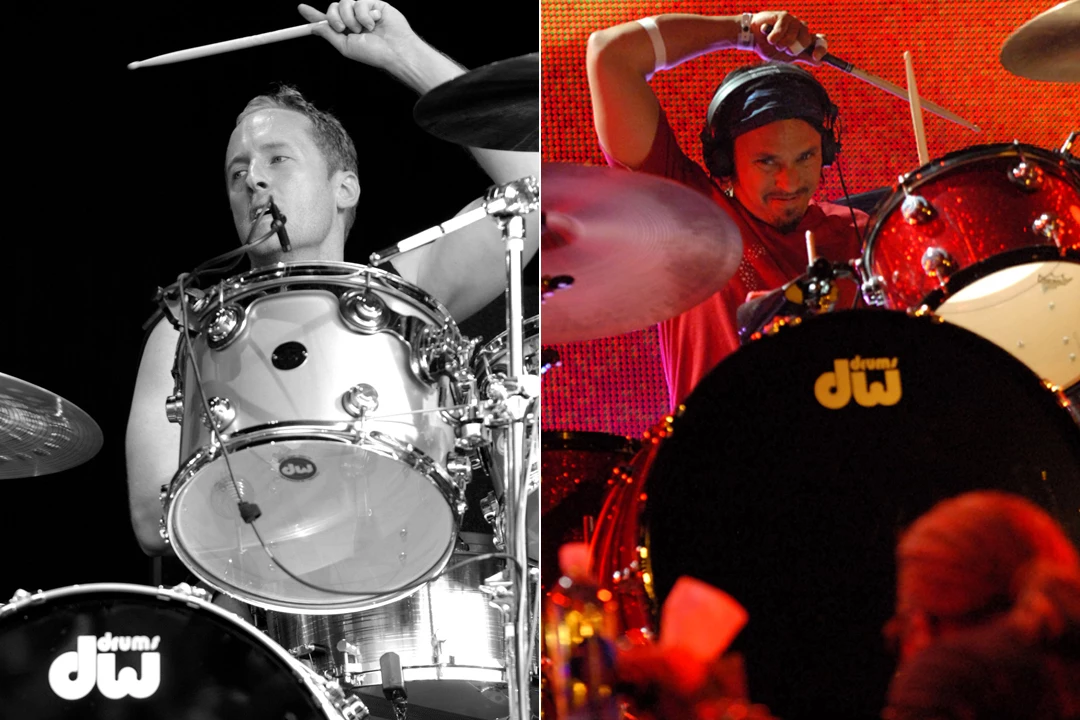
Axl Rose, Dizzy Reed, Paul Tobias, Tommy Stinson, Chris Pitman, Buckethead, Brain (2000)
Freese leaves to form A Perfect Circle with Maynard James Keenan. He's succeeded by Bryan "Brain" Mantia, a childhood friend of Buckethead's who also had a stint in Primus.
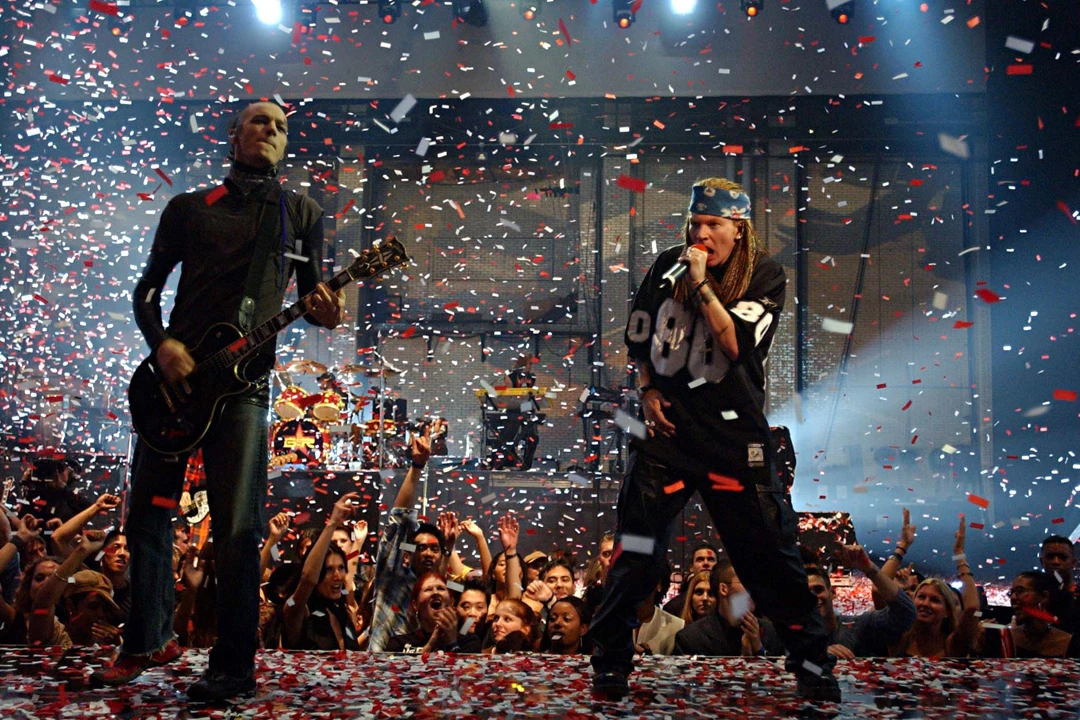
Axl Rose, Dizzy Reed, Paul Tobias, Tommy Stinson, Chris Pitman, Buckethead, Brain, Robin Finck (2000-2002)
Finck returns to give Guns N' Roses a three-guitar sound that Axl Rose has tended to favor in the band's latter-day era. Work with Nine Inch Nails continues.
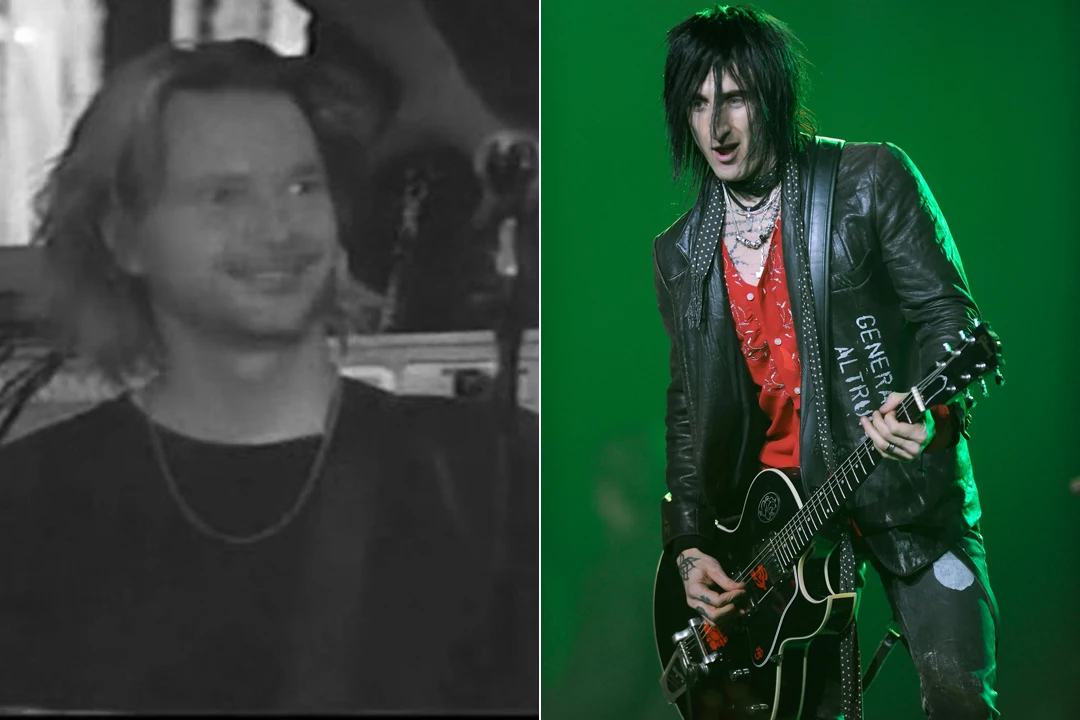
Axl Rose, Dizzy Reed, Tommy Stinson, Chris Pitman, Buckethead, Brain, Robin Finck, Richard Fortus (2002-2004)
A smattering of long-awaited live dates followed, but Tobias ultimately left in frustration over the band's general inactivity. Successor Richard Fortus had been with the Psychedelic Furs.
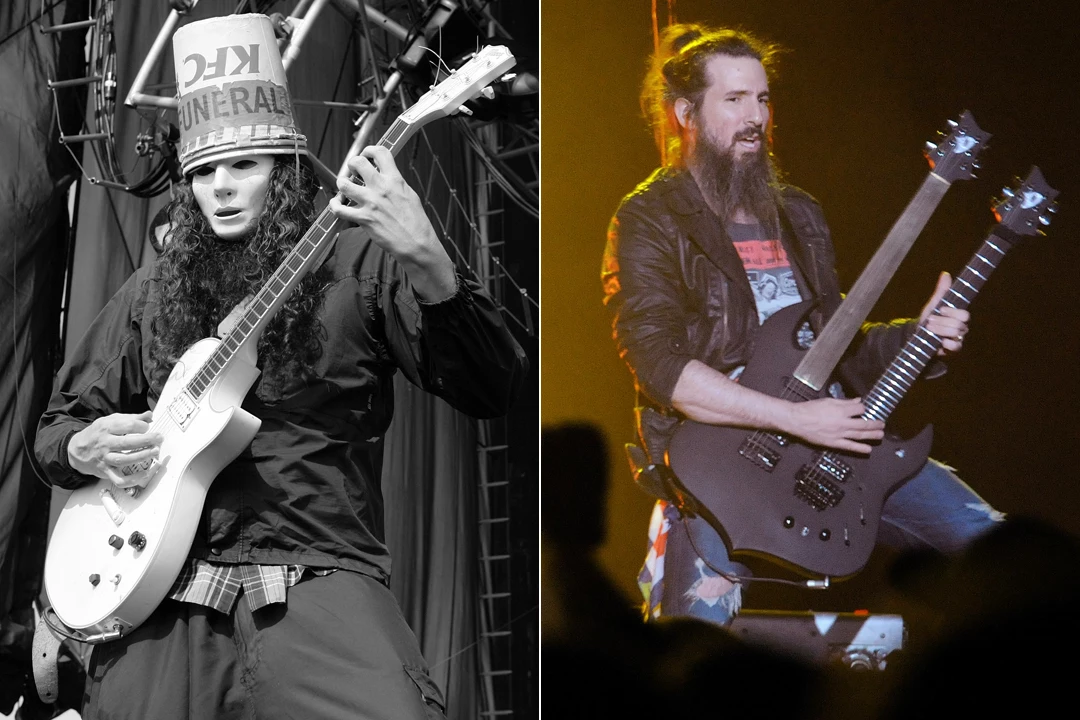
Axl Rose, Dizzy Reed, Tommy Stinson, Chris Pitman, Brain, Robin Finck, Richard Fortus, Ron Thal (2006)
After mounting their first tour since 1993, Guns N' Roses saw the busy Buckethead replaced by Bumblefoot, who'd come recommended by Joe Satriani. Work continues on Guns N' Roses' first album in a decade.
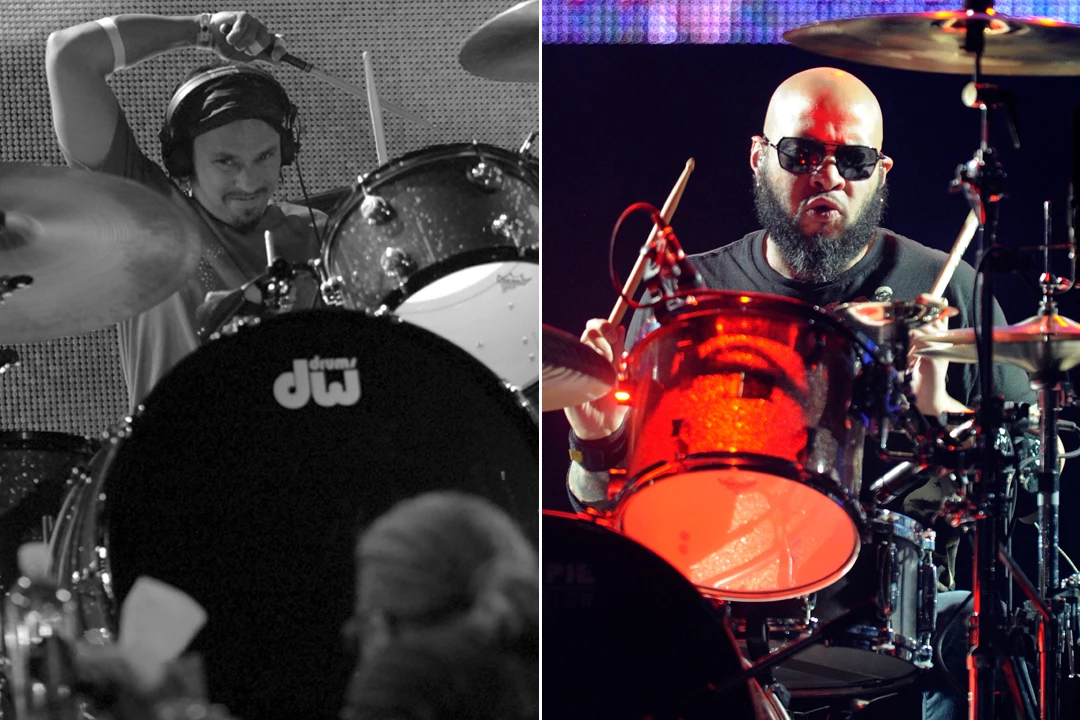
Axl Rose, Dizzy Reed, Tommy Stinson, Chris Pitman, Robin Finck, Richard Fortus, Ron Thal, Frank Ferrer (2006-2009)
Ferrer, who had previously appeared with Fortus in the Psychedelic Furs, completes a lineup that finally releases 'Chinese Democracy.' The long-delayed album ultimately featured work from several former members, as well.
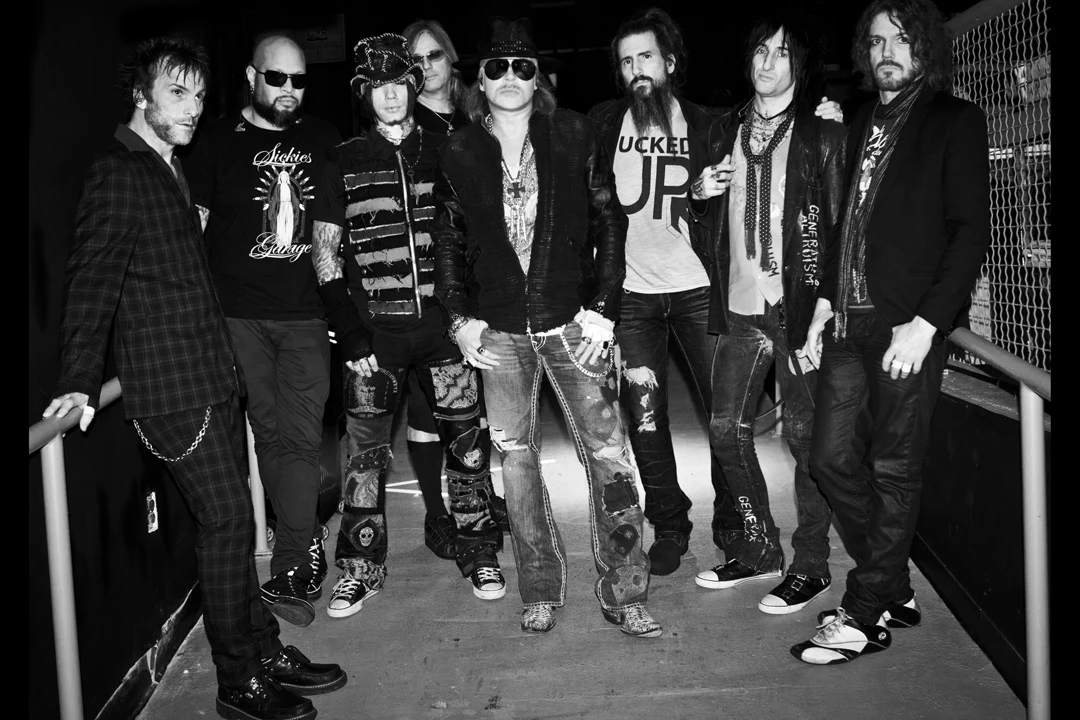
Axl Rose, Dizzy Reed, Tommy Stinson, Chris Pitman, Richard Fortus, Ron Thal, Frank Ferrer, DJ Ashba (2009-2015)
A former collaborator with Steven Adler in BulletBoys, Ashba replaces Finck in time for the world tour in support of 'Chinese Democracy.' Finck went back to work for Nine Inch Nails again.
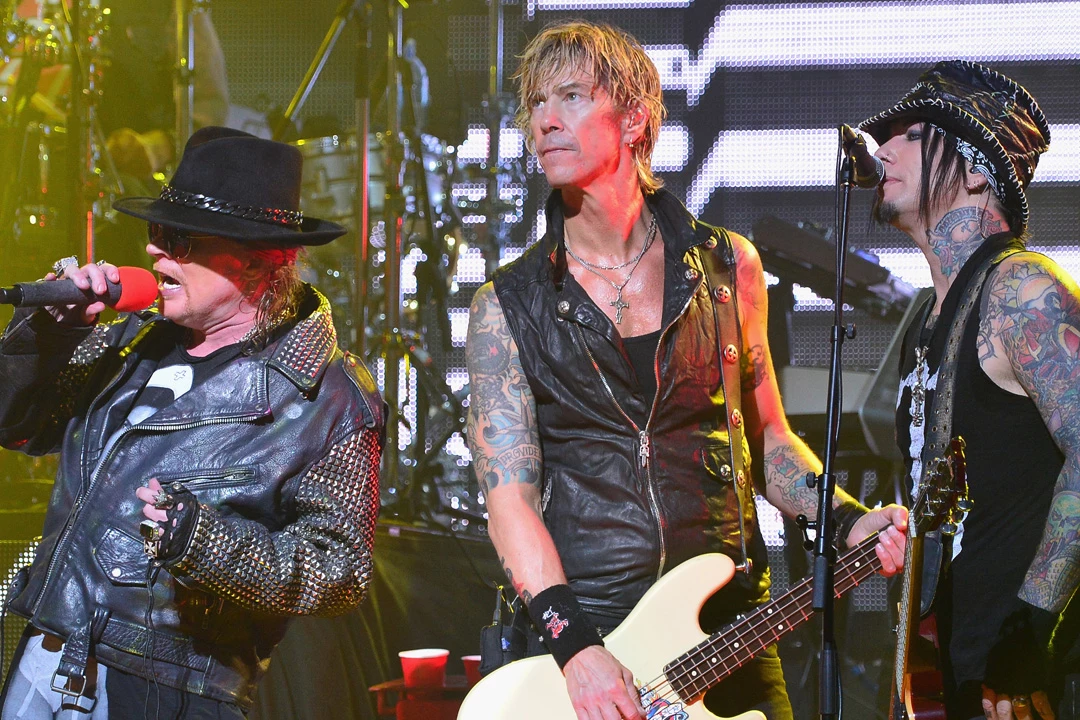
Guns N' Roses + Duff McKagan (2014)
With Stinson temporarily occupied by a brief Replacements reunion, McKagan rejoins Guns N' Roses for a six-show 2014 South American tour.
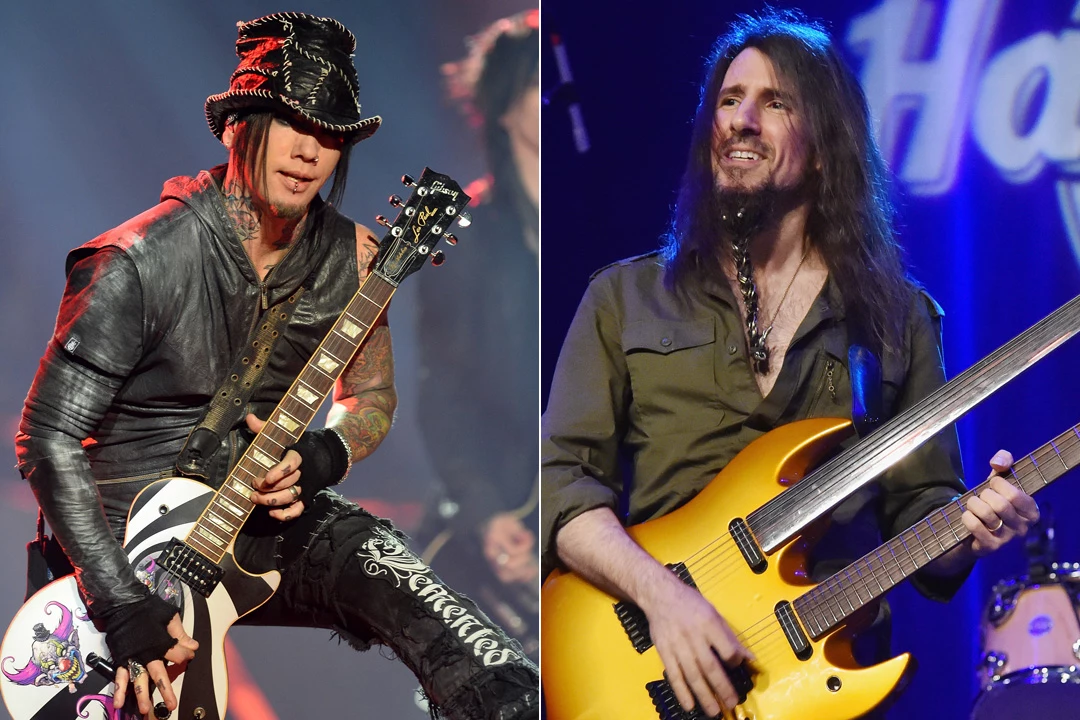
Axl Rose, Dizzy Reed, Tommy Stinson, Chris Pitman, Richard Fortus, Frank Ferrer (2015)
Ashba and then Thal split with Guns N' Roses, ending a lengthy period of touring activity and stability. Their twin departures follow news that Rose and Slash have rekindled their friendship, sparking reunion rumors.
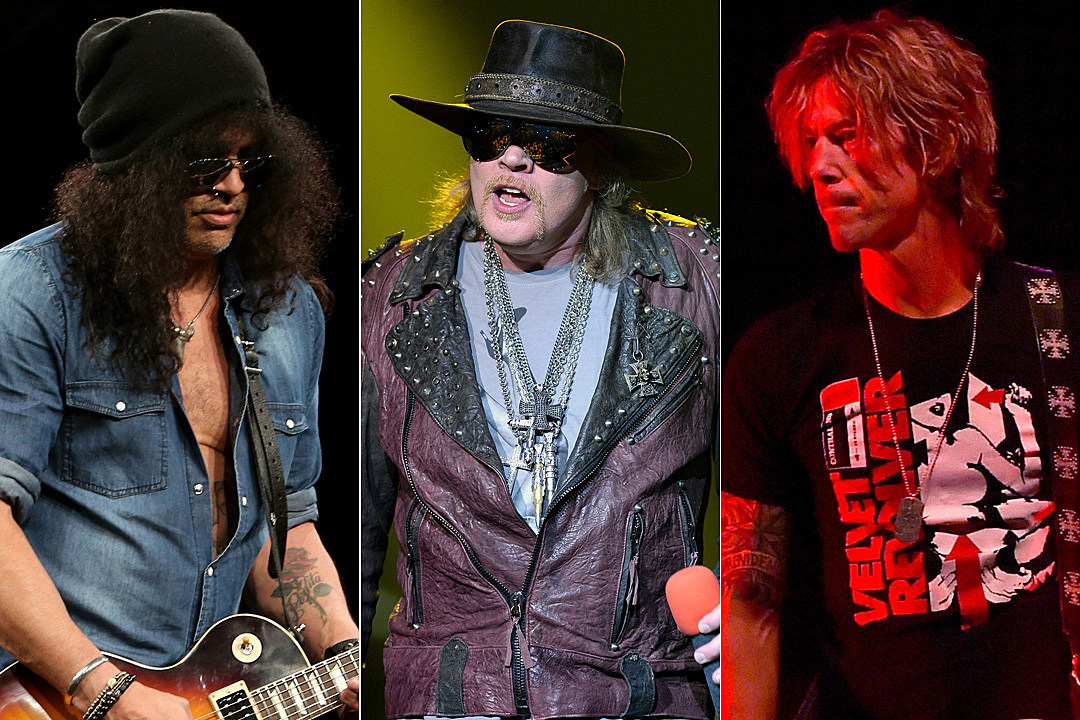
Axl Rose, Slash, Duff McKagan, Dizzy Reed, Richard Fortus, Frank Ferrer & Melissa Reese (2016-?)
In early 2016 Guns N' Roses announced that Axl Rose, Slash and Duff McKagan would reunite for the "Not in this Lifetime" tour, the first time all three have been on stage together since 1993. The lineup for their first show, April 1st at the Troubadour in Los Angeles, also featured longtime keyboardist Dizzy Reed, guitarist Richard Fortus, drummer Frank Ferrer, and second keyboardist Melissa Reese.